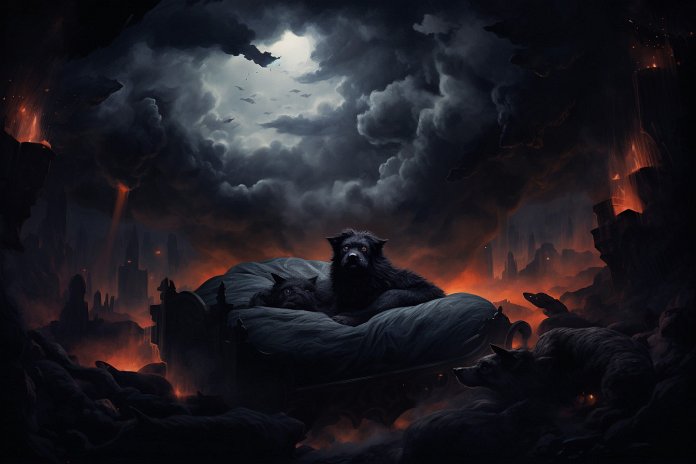
Dogs have dreams similar to humans, and they can also have nightmares. Signs of a dog having a nightmare include growling, barking, whining, panting, and tense jaw. Other signs may include twitching whiskers, sweaty paws, and whimpering. Dogs may also exhibit fast-paced breathing, heavy breathing, bubble-like noises, and movement of eyes and twitching of eyelids during a nightmare.
History of Dogs Having Nightmares
Research conducted at MIT confirmed that animals like rats dream, and since dogs are more complex animals, they also dream. Dogs tend to dream about events that happened during the day or events that happened earlier. Dogs may have nightmares about things they dislike or fear, such as taking a bath, going to the groomer, or being chased by another dog. Rescue dogs, in particular, may have nightmares about past traumatic experiences.
Science Behind Dogs Having Nightmares
Dogs have a similar dream pattern to humans, with two main sleep stages: REM and SWS. During REM sleep, dogs experience nightmares. Their dreams feel real and vivid, leading to twitching paws, growling, snarling, and even walking around. Dogs enter REM sleep and start dreaming about ten to fifteen minutes after falling asleep.
Training Dogs Who Suffer from Nightmares
While you cannot stop your dog from having nightmares, you can make them more comfortable if they suffer from regular nightmares. It’s important not to wake them up from a dream or nightmare, as it can confuse and startle them. Instead, let them sleep when they need to. You can use a DAP collar or essential oil diffuser with calming scents to keep them relaxed. If you witness your dog having a nightmare, gently call their name to wake them up in a soothing way. Playing soothing music or leaving the TV on can also help keep them calm and relaxed while they sleep.
“Helping your dog through a nightmare: Understanding their signs and providing comfort”

Tips & Things to Know
1️⃣ Recognize the signs: If your dog is having a nightmare, look out for signs such as growling, barking, whining, panting, tense jaw, twitching whiskers, sweaty paws, and whimpering. These signs indicate that something is frightening or bothering them in their dream.
2️⃣ Understand the science: Dogs have a similar dream pattern to humans, with REM (rapid eye movement) sleep being the stage where nightmares occur. During REM sleep, your dog’s body fully relaxes while their mind is still working at full capacity, leading to vivid and realistic nightmares. Understanding this process can help you empathize with your dog and respond appropriately.
3️⃣ Provide comfort without waking them: While you can’t stop your dog from having nightmares, you can create a more comfortable environment for them. Avoid waking them up abruptly from a nightmare, as it can confuse and startle them. Instead, use calming techniques like diffusing relaxing essential oils, playing soothing music, or softly calling their name to gently bring them out of the dream state and reassure them that you are there for them.
Frequently Asked Questions, Answered ✅
1. Do dogs have nightmares like humans do?
– Yes, dogs can have nightmares just like humans do.
2. What are some signs that a dog is having a nightmare?
– Signs of a dog having a nightmare include growling, barking, whining, panting, tense jaw, twitching whiskers, sweaty paws, and whimpering.
3. What do dogs often dream about?
– Dogs often dream about events that happened during the day or versions of events that happened earlier. They may also dream about things they dislike or fear, such as taking a bath or getting chased by another dog.
4. What happens during a dog’s bad dream?
– During a dog’s bad dream, they enter the REM (Rapid Eye Movement) sleep stage where their body fully relaxes and their mind is still working at full ability. They may experience vivid and real nightmares, which can result in twitching paws, growling, snarling, and even getting up and walking around.
5. How can you help a dog who suffers from nightmares?
– It is important to never wake a dog up from a dream or nightmare, as it can confuse and startle them. Instead, you can try calling their name gently and softly to bring their mental awareness back to the present. Using calming techniques such as DAP collars, essential oils, soothing music, or leaving the TV on can also help keep them calm and relaxed while they sleep.